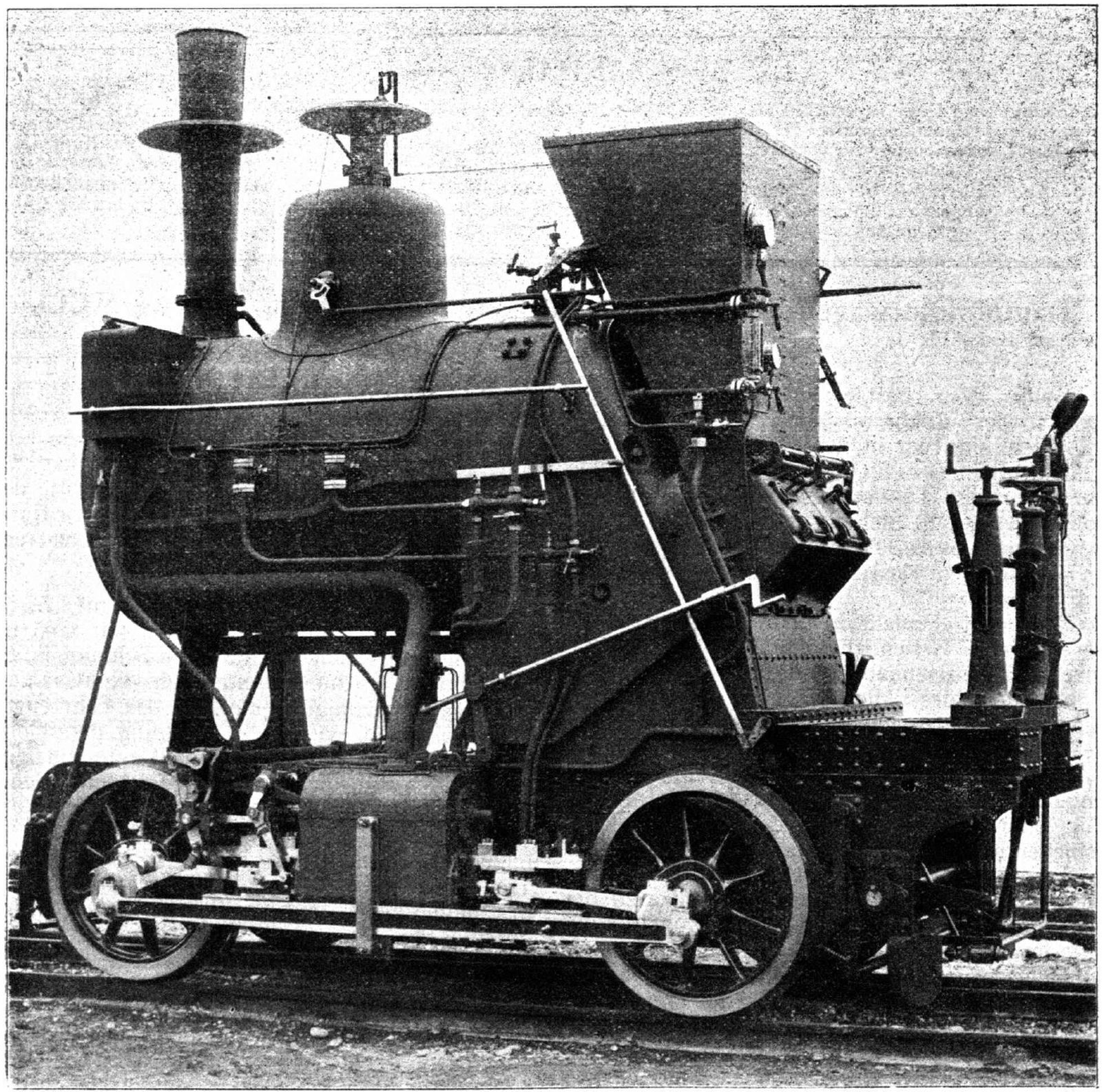The Royal Bavarian State Railways were already using steam railcars from around 1880, but after the turn of the century the time was ripe for a new model with bogies. Therefore, between 1906 and 1908, a total of seven examples of the MCCi class were procured with a car body from MAN and power plant from Maffei. In principle, the powered bogie was identical to the two-axle ML 2/2 local railway locomotive that Maffei was offering at the same time.

Drive bogie with boiler, controls and coal hopper
Die Lokomotive, March 1907
What was special about this power plant was that cylinders fitted in the middle on the outside with opposing pistons each acted on a wheel set and these wheel sets were in turn connected by coupling rods. While the coupling rods on the ML 2/2 were on the inside and acted on cranked axles, here they were on the outside. The boiler was above this bogie inside the car body and could therefore be reached by the engine driver in the front driver's cab. The entire bogie, including boiler and controls, weighed 18.2 tonnes and could be separated from the car for maintenance.

Schematic drawing with dimensions
Die Lokomotive, August 1906
As with the local railway locomotives ML 2/2 and PtL 2/2, a semi-automatic mechanism ensured that one person could drive and stoke the locomotive alone. If the railcar drove ahead with the non-powered bogie, the conductor in the second driver's cab could operate the brake valve himself and communicate with the engine driver via a speaking tube. Behind the power unit was the usable space with 55 seats, 30 standing places and a small luggage compartment. In comparison with a passenger train pulled by a B VI and having the same capacity, a cost saving of 25 percent and half the coal consumption was quoted. Thanks to a possible trailer load of 40 tonnes, the capacity could be increased with one to two passenger cars.
After being taken over by the Reichsbahn, four of the examples were converted into electric railcars in 1924 and initially designated as the D4i ElT. They performed well in use and therefore formed the basis of the ET 85, which had been in series production since 1927. Another example was converted to diesel by MAN in 1928 and tested in the Nuremberg area, but could not keep up with the electric versions and was decommissioned after a short time.